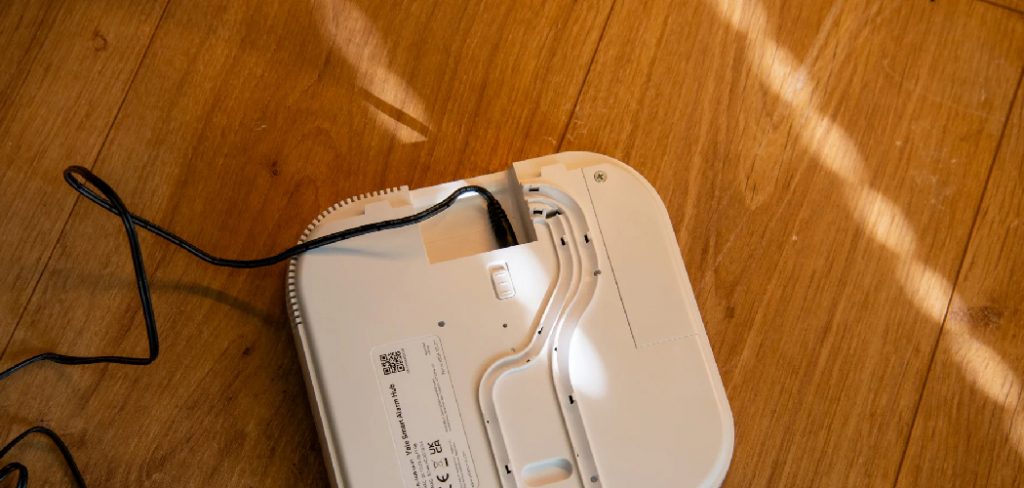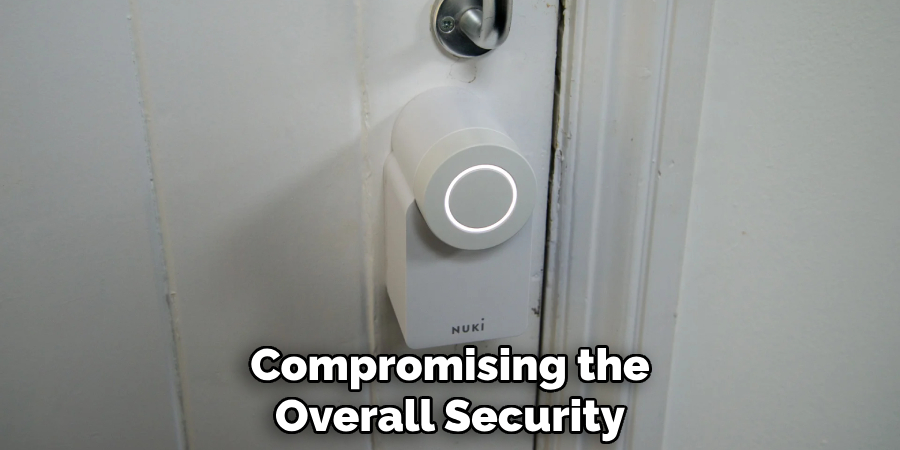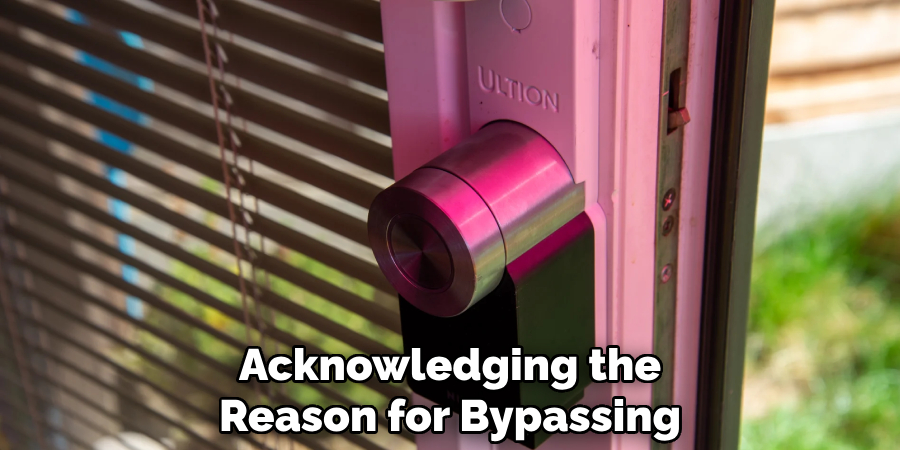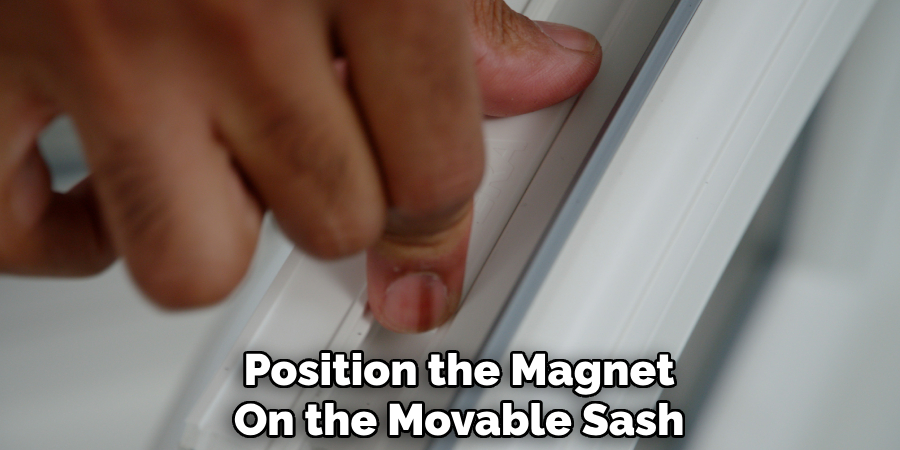While alarm systems are crucial for home security, there may be times when you need to bypass a door sensor temporarily.

Whether you’re doing maintenance, moving furniture, or simply want to leave a door open while the system is armed, knowing how to bypass an alarm door sensor can be invaluable. By temporarily disabling the sensor, you can prevent false alarms and maintain the flexibility to move freely within your home without triggering the alarm system.
In this guide, we’ll explore the step-by-step process of how to bypass alarm door sensor safely and effectively, ensuring that your home remains protected while providing you with the convenience and peace of mind you need.
Importance of Understanding Alarm Systems
Understanding the ins and outs of your home alarm system goes beyond merely knowing how to arm or disarm it. A thorough grasp of your system’s functionalities, including the ability to bypass individual sensors, significantly enhances your security measures, offering a tailored approach to safeguarding your home.
Being well-acquainted with your alarm’s features allows you to adapt its functions to suit various scenarios—whether it’s avoiding false alarms triggered by pets or ensuring parts of your home remain accessible during specific times.
Furthermore, knowledge of how to manage and manipulate your alarm system empowers homeowners to promptly address technical issues or adapt their security setup without overly relying on external help, ensuring continuous protection and convenience.
Situations Requiring Bypassing
There are several common situations where bypassing a door sensor might be necessary to avoid inconvenience without compromising the overall security of your home. Some of these scenarios include:

- Maintenance and Repairs: When you need to perform maintenance work or repairs that require a door to be open for an extended period, bypassing the sensor can prevent the alarm from being triggered unintentionally.
- Moving Large Items: If you’re moving large items in or out of your house, such as furniture or appliances, bypassing a sensor can allow you greater freedom without having to disarm your entire security system.
- Pets and Small Children: Homes with pets or small children might find it beneficial to bypass a door sensor to prevent false alarms caused by pets going in and out or children opening doors.
- Ventilation: On occasions where you want to allow for added ventilation, you might choose to keep a door open. Bypassing the sensor in this case ensures the alarm doesn’t get activated while allowing fresh air to circulate.
- Hosting Events: When hosting events that require guests to move freely in and out of certain areas in your home, strategically bypassing sensors can help maintain a flow while keeping other parts of your home secured.
Each of these situations presents a case where the flexibility to bypass a sensor temporarily can greatly enhance the convenience and utility of your home alarm system without sacrificing security.
Understanding the Reason for Bypassing
Before attempting to bypass any door sensor, it’s crucial to understand the specific reason behind the need for such action. This understanding not only ensures that you’re making an informed decision but also aids in selecting the most appropriate method for bypassing the sensor.

Different scenarios may require different approaches to maintain the balance between convenience and security.
For instance, temporary situations like hosting an event or performing maintenance may warrant a temporary bypass that can easily be reverted, whereas a persistent issue, such as a faulty sensor that frequently triggers false alarms, might necessitate a more long-term solution or even a replacement of the hardware.
Acknowledging the reason for bypassing also allows homeowners to assess the potential security risks involved and take necessary precautions to mitigate any vulnerabilities that may be introduced by disengaging the sensor.
Determining the Type of Alarm System
Before proceeding with bypassing a door sensor, it’s essential to identify the type of alarm system installed in your home. Alarm systems can vary significantly, from wired setups to wireless solutions, and each may have a different process for sensor by passing. Generally, home alarm systems can be categorized into the following:
- Wired Alarm Systems: This type involves sensors that are physically connected to the main control panel through wires. Bypassing a sensor in a wired system may require manual configuration at the control panel or through a connected app, depending on the system’s capabilities.
- Wireless Alarm Systems: These systems use radio frequency signals to communicate between the sensors and the control panel. Wireless systems often provide a more user-friendly interface for bypassing sensors, allowing homeowners to do so directly from a keypad, smartphone app, or web interface.
- Smart Home Security Systems: Smart systems are a subset of wireless alarms that integrate with a broader range of home automation devices. Bypassing sensors in smart home systems can usually be done via an app, offering the most flexibility and control.

Identifying your system type is crucial as the method for bypassing sensors can vary widely between these categories. Additionally, understanding your system’s specifics can help ensure that you’re implementing the bypass correctly and securely, without unintentionally compromising your home’s security.
Review your system’s user manual or consult with the manufacturer if you’re unsure of your alarm system’s type. This step ensures that you’re well-prepared to safely bypass a sensor when needed, aligning with the security protocols of your specific system.
Safety Precautions to Consider
Before attempting to bypass any sensor within your home security system, taking certain safety precautions is paramount to ensure that you do not unintentionally compromise the safety and security of your home. Here are some vital safety guidelines to follow:
- Consult the User Manual: Always refer to your system’s user manual before attempting to modify its settings. The manual will provide specific instructions on safely bypassing sensors without affecting the overall security of your system.
- Ensure System Backup: Confirm that your security system has a backup power source. In case of a power outage, your system should remain operational to ensure continuous protection.
- Notify Your Security Company: If your system is monitored, inform your security company before bypassing any sensors. This is crucial to prevent false alarms and to ensure that the security company does not interpret the sensor bypass as a breach.
- Check System Regularly: After bypassing a sensor, regularly check the system to ensure that it is functioning correctly. Make sure that the sensors you have bypassed do not remain so indefinitely, and remember to restore them to their operational status as soon as possible.
- Secure Other Entry Points: When bypassing a sensor on a specific entry point, ensure that all other entry points to your home are secured. This may involve double-checking locks on doors and windows or ensuring other sensors are activated.
- Consider Alternative Security Measures: If a sensor is bypassed for an extended period, consider implementing additional security measures. This could include installing motion detectors in the area or using alternative locking mechanisms.

Following these safety precautions can help maintain the integrity of your home security system while accommodating the temporary need to bypass a sensor, ensuring that your home remains a safe and secure environment.
10 Methods How to Bypass Alarm Door Sensor
Using the Alarm Control Panel:
Most modern alarm systems come with a control panel that allows users to arm, disarm, and bypass sensors. To bypass a door sensor using the control panel, navigate to the system’s menu and select the option to bypass sensors.
Follow the on-screen prompts to choose the specific door sensor you wish to bypass, and confirm the bypass action. Once the sensor is bypassed, it will not trigger the alarm system until it is re-enabled.
Entering a Bypass Code:
Some alarm systems require users to enter a bypass code to temporarily disable sensors. This code is typically provided by the alarm monitoring company or programmed by the user during system setup.
To bypass a door sensor using a bypass code, enter the code using the control panel or keypad, followed by the specific sensor number you wish to bypass. Once the code is entered correctly, the sensor will be temporarily disabled.
Using a Key Fob or Remote Control:
Many alarm systems come with key fobs or remote controls that allow users to arm, disarm, and bypass sensors remotely.
To bypass a door sensor using a key fob or remote control, simply press the designated bypass button or sequence, followed by the specific sensor number you wish to bypass. Once the command is sent, the sensor will be temporarily disabled, allowing you to move freely without triggering the alarm.
Using a Smartphone App:

Some advanced alarm systems offer smartphone apps that allow users to control their systems remotely. To bypass a door sensor using a smartphone app, open the app and navigate to the sensor bypass feature.
Select the specific door sensor you wish to bypass and follow the on-screen prompts to confirm the bypass action. The sensor will then be temporarily disabled until it is re-enabled through the app.
Physically Disabling the Sensor:
In some cases, you may need to physically disable a door sensor to bypass it temporarily. To do this, locate the sensor on the door frame and carefully remove it from its mounting bracket. Depending on the sensor type, you may need to detach it from its wiring or simply remove the batteries to disable it temporarily.
Keep in mind that this method should only be used if other bypass options are not available or feasible.
Using a Maintenance Mode Feature:
Some alarm systems offer a maintenance mode feature that allows users to bypass sensors temporarily for maintenance or servicing purposes. To use this feature, access the system’s menu or settings and enable the maintenance mode option.
Follow the on-screen prompts to select the specific door sensor you wish to bypass, and confirm the bypass action. Once the maintenance mode is activated, the sensor will be temporarily disabled until the mode is deactivated.
Adjusting Sensor Sensitivity:

If you need to bypass a door sensor due to false alarms triggered by minor movements or vibrations, adjusting the sensor sensitivity may provide a solution. Most alarm systems allow users to adjust the sensitivity levels of individual sensors to reduce false alarms.
Navigate to the sensor settings menu on the control panel or through the smartphone app and adjust the sensitivity settings as needed to prevent false alarms.
Using a Temporary Bypass Device:
Temporary bypass devices are available for situations where you need to bypass a sensor temporarily without accessing the control panel or keypad. These devices typically consist of a small transmitter that communicates with the alarm system to temporarily disable sensors.
To use a temporary bypass device, follow the manufacturer’s instructions to pair it with your alarm system and activate the bypass function as needed.
Contacting the Monitoring Company:
If you’re unable to bypass a door sensor using the methods mentioned above, you can contact your alarm monitoring company for assistance. The monitoring company may be able to remotely bypass the sensor or provide you with a temporary override code to disable it temporarily.
Be sure to have your account information and system details ready when contacting the monitoring company for assistance.
Seeking Professional Assistance:
If you’re unsure how to bypass a door sensor or if you encounter any issues during the process, it’s best to seek professional assistance from a qualified alarm technician.
They can provide guidance on how to bypass the sensor safely and effectively, ensuring that your alarm system remains operational and your home remains protected. Additionally, a professional technician can address any underlying issues with the sensor or system that may be causing difficulties.
Temporary Bypass Methods
When seeking temporary solutions for bypassing alarm door sensors, it’s crucial to balance the need for convenience with maintaining security.
The above methods, including using the alarm control panel, entering a bypass code, employing remote controls, and utilizing smartphone apps, allow for a swift and reversible way to disable sensors as needed.
Employing such methods should always be done with an understanding of the implications for your home’s security and in compliance with any guidelines provided by your alarm system manufacturer or monitoring company.
It’s essential to remember that these temporary bypasses should be used judiciously to avoid unintentionally compromising the security of your home. For situations where a sensor is frequently triggered by non-threatening events, adjusting sensor sensitivity or seeking professional advice for a more permanent solution may be preferable.
Always ensure that any temporary bypass is properly reversed to maintain the protective perimeter that your alarm system provides.
Utilizing Override Codes or Keys
Override codes or keys serve as an important tool for managing your alarm system, particularly when needing to bypass or disable specific sensors temporarily without altering the system’s overall security settings.

These special codes or physical keys are typically provided by the system’s manufacturer or the monitoring service for use in situations where immediate, manual intervention is necessary.
To use an override code, you would enter this unique code into the alarm system’s keypad or control panel, often followed by specific commands that indicate the action to be taken, such as bypassing a sensor.
This method is highly secure since override codes are designed to be known only by the system owner and possibly the monitoring company, ensuring that the ability to alter the system’s settings is kept in limited hands.
In scenarios where physical keys are used as overrides, these are usually inserted into a keyhole on the control panel or a specific device associated with the alarm system. Turning the key will either enable or disable certain functions directly, including the temporary bypass of sensors.
Using Professional Assistance if Available
When dealing with the complexity of home alarm systems, especially in scenarios requiring the bypass of door sensors or adjustment of system settings, utilizing professional assistance can be invaluable.
Professional alarm technicians possess the expertise and tools needed to diagnose and resolve issues safely and efficiently, ensuring that your system’s integrity and security are maintained. They can offer tailored advice, perform necessary adjustments, and offer long-term solutions that might not be apparent to the average user.
In addition to troubleshooting, professional installers can conduct regular system check-ups, ensuring that all components of your alarm system are in optimal working condition and updating you on new features or upgrades that could enhance your home security.
This proactive approach can prevent future issues, saving time and potentially avoiding emergency situations where immediate sensor bypass or system adjustments are necessary.
Conclusion
In conclusion, understanding how to safely bypass an alarm door sensor is a valuable skill for homeowners facing specific situations that require temporary or permanent disarming.
While the process of bypassing should be approached with caution and only in circumstances where it is absolutely necessary, knowing the appropriate methods can provide peace of mind and alleviate potential frustrations.
Whether utilizing temporary solutions such as override codes or seeking permanent alternatives like sensor upgrades, safety and legality should always be prioritized.
It’s crucial to communicate any bypassing actions taken with household members and to promptly reinstate sensor functionality once the situation no longer requires bypassing. Thanks for reading, and we hope this has given you some inspiration on how to bypass alarm door sensor!
About
Safety Fic is a distinguished figure in the world of Diy design, with a decade of expertise creating innovative and sustainable Diy solutions. His professional focus lies in merging traditional craftsmanship with modern manufacturing techniques, fostering designs that are both practical and environmentally conscious. As the author of diy, Safety Fic delves into the art and science of Safety Fic-making, inspiring artisans and industry professionals alike.
Education RMIT University
(Melbourne, Australia) Associate Degree in Design (Safety Fic) Focus on sustainable design, industry-driven projects, and practical craftsmanship. Gained hands-on experience with traditional and digital manufacturing tools, such as CAD and CNC software.
Nottingham Trent University
(United Kingdom) Bachelor’s in diyfastly.com and Product Design (Honors) Specialized in product design with a focus on blending creativity with production techniques. Participated in industry projects, working with companies like John Lewis and Vitsoe to gain real-world insights.
Publications and Impact
In diy, Safety Fic his insights on indoor design processes, materials, and strategies for efficient production. His writing bridges the gap between artisan knowledge and modern industry needs, making it a must-read for both budding designers and seasoned professionals.
